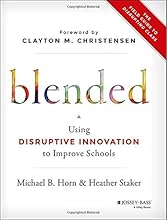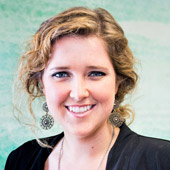Founder & President at 21st-Century Guide School; Child Education Specialist
Heather Staker Biography
Heather Staker is the Founder and President of 21st-Century Guide School, an organization dedicated to empowering students through personalized, purpose-driven learning. A nationally recognized thought leader on education innovation, Staker is widely known for her pioneering work on blended learning and student agency.
Before founding 21st-Century Guide School, Staker co-authored the influential book Blended: Using Disruptive Innovation to Improve Schools and led education research at the Clayton Christensen Institute. Her insights have shaped policy and practice in schools across the U.S. and internationally. She has advised state education departments, spoken at leading education forums, and written extensively about reimagining learning environments for the modern era.
Staker holds a B.A. from Harvard University and an M.B.A. from the Harvard Business School. Through her work, she continues to champion learning models that foster independence, curiosity, and real-world readiness among students.
Contact a speaker booking agent to check availability on Heather Staker and other top speakers and celebrities.
Heather Staker Speaking Topics
-
Ready to Blend: Training School Leaders to Make the Most of Technology Investments
Through half-day and full-day training sessions, Staker prepares school leaders to develop high-quality blended-learning plans that maximize the impact of technology in classrooms. The core objectives of these sessions are to:
- Introduce the theories of disruptive and sustaining innovation as a framework for helping to understand the rise of K-12 blended learning.
- Increase awareness of the difference between high-quality blended learning and “cramming,” which means using technology for technology’s sake. Help participants identify worthwhile uses of technology and design an emergent strategy to capture the opportunity.
- Introduce a multi-step process for designing and implementing a blended-learning program. The steps include defining the "rally cry," organizing to innovate, designing the model from a jobs-to-be-done perspective, implementing, and iterating through a discovery-driven planning process. Through concepts, tools and technology, Staker helps participants break down the planning process into a series of steps. These steps can then be used to help school leaders systematically prepare for, design, and implement their own customized blended-learning plans.
- Give participants opportunities to practice the skills that lead to success. Increased awareness and a systematic framework are most valuable when tied directly to practical skill building. Using case studies and group exercises, Staker challenges participants to engage in the blended-learning planning process using a hands on approach so that by the end, they are ready to apply those techniques on their own when they complete their plans as school teams.
- Help participants connect their learning to their next steps. Participants will leave with insights on how to get started with blended learning, as well as a sense of expertise about the step-by-step framework so that they have a complete roadmap to follow as they develop their school-based plans.
-
Is K-12 Blended Learning Disruptive? An Introduction to the Theory of Hybrids
Steam-powered sailing ships, Kodak photo kiosks, and the Toyota Prius all share one thing in common: they are hybrids—which means they combine an old and new technology to offer “the best of both worlds.” In many ways, thousands of classrooms across America are doing the same thing. They are trying to offer the advantages of online learning along with the benefits of the traditional system by implementing hybrid blended-learning models. The Flipped Classroom, Station Rotation, and Lab Rotation are classic examples. But other blended models are following an entirely different path. They are literally tearing down classroom walls and offering a disruptive alternative to traditional education. The theory of hybrids helps education leaders and contributors shine a light on the future and anticipate what direction the school system is heading. In this provocative conversation, Staker predicts that over the long term, disruptive models will replace traditional schooling altogether and become the primary way middle and high school students experience learning.

-
How do I book Heather Staker to speak at my event?
Our experienced booking agents have successfully helped clients around the world secure speakers like Heather Staker for speaking engagements, personal appearances, product endorsements, or corporate entertainment since 2002. Click the Check Availability button above and complete the form on this page to check availability for Heather Staker, or call our office at 1.800.698.2536 to discuss your upcoming event. One of our experienced agents will be happy to help you get speaking fee information and check availability for Heather Staker or any other speaker of your choice. -
What are the speaker fees for Heather Staker
Speaking fees for Heather Staker, or any other speakers and celebrities, are determined based on a number of factors and may change without notice. The estimated fees to book Heather Staker are $10,000 - $20,000 for live events and $10,000 - $20,000 for virtual events. For the most current speaking fee to hire Heather Staker, click the Check Availability button above and complete the form on this page, or call our office at 1.800.698.2536 to speak directly with an experienced booking agent. -
What topics does Heather Staker speak about?
Heather Staker is a keynote speaker and industry expert whose speaking topics include Author, Business Consulting, Business Leadership, Disability, Disruptive Thinking, Early Childhood Education, Education, Education Reform, Educational Motivational, Female Leadership, Innovation, Inspirational, Leadership, Motivational, Neuroscience, Social Activism, Thought Leadership, Workshop -
Where does Heather Staker travel from?
Heather Staker generally travels from Austin, TX, USA, but can be booked for private corporate events, personal appearances, keynote speeches, or other performances. For more details, please contact an AAE Booking agent. -
Who is Heather Staker’s agent?
AAE Speakers Bureau has successfully booked keynote speakers like Heather Staker for clients worldwide since 2002. As a full-service speaker booking agency, we have access to virtually any speaker or celebrity in the world. Our agents are happy and able to submit an offer to the speaker or celebrity of your choice, letting you benefit from our reputation and long-standing relationships in the industry. Please click the Check Availability button above and complete the form on this page including the details of your event, or call our office at 1.800.698.2536, and one of our agents will assist you to book Heather Staker for your next private or corporate function. -
What is a full-service speaker booking agency?
AAE Speakers Bureau is a full-service speaker booking agency, meaning we can completely manage the speaker’s or celebrity’s engagement with your organization from the time of booking your speaker through the event’s completion. We provide all of the services you need to host Heather Staker or any other speaker of your choice, including offer negotiation, contractual assistance, accounting and billing, and event speaker travel and logistics services. When you book a speaker with us, we manage the process of hosting a speaker for you as an extension of your team. Our goal is to give our clients peace of mind and a best-in-class service experience when booking a speaker with us. -
Why is AAE Speakers Bureau different from other booking agencies?
If you’re looking for the best, unbiased speaker recommendations, paired with a top-notch customer service experience, you’re in the right place. At AAE Speakers Bureau, we exclusively represent the interests of our clients - professional organizations, companies, universities, and associations. We intentionally do not represent the speakers we feature or book. That is so we can present our clients with the broadest and best performing set of speaker options in the market today, and we can make these recommendations without any obligation to promote a specific speaker over another. This is why when our agents suggest a speaker for your event, you can be assured that they are of the highest quality with a history of proven success with our other clients.
Heather Staker is a keynote speaker and industry expert who speaks on a wide range of topics such as Ready to Blend: Training School Leaders to Make the Most of Technology Investments, Is K-12 Blended Learning Disruptive? An Introduction to the Theory of Hybrids, How Disruptive Innovation is Changing the Way the World Learns and The Rise of K-12 Blended Learning: Why It’s Hot and When It’s Not. The estimated speaking fee range to book Heather Staker for your event is $10,000 - $20,000. Heather Staker generally travels from Austin, TX, USA and can be booked for (private) corporate events, personal appearances, keynote speeches, or other performances. Similar motivational celebrity speakers are Liz Dozier, Gever Tulley, Erin Gruwell, Doug Lemov and Carol Geary Schneider. Contact All American Speakers for ratings, reviews, videos and information on scheduling Heather Staker for an upcoming live or virtual event.
This website is a resource for event professionals and strives to provide the most comprehensive catalog of thought leaders and industry experts to consider for speaking engagements. A listing or profile on this website does not imply an agency affiliation or endorsement by the talent.
All American Entertainment (AAE) exclusively represents the interests of talent buyers, and does not claim to be the agency or management for any speaker or artist on this site. AAE is a talent booking agency for paid events only. We do not handle requests for donation of time or media requests for interviews, and cannot provide celebrity contact information.
If you are the talent and wish to request a profile update or removal from our online directory, please submit a profile request form.

































